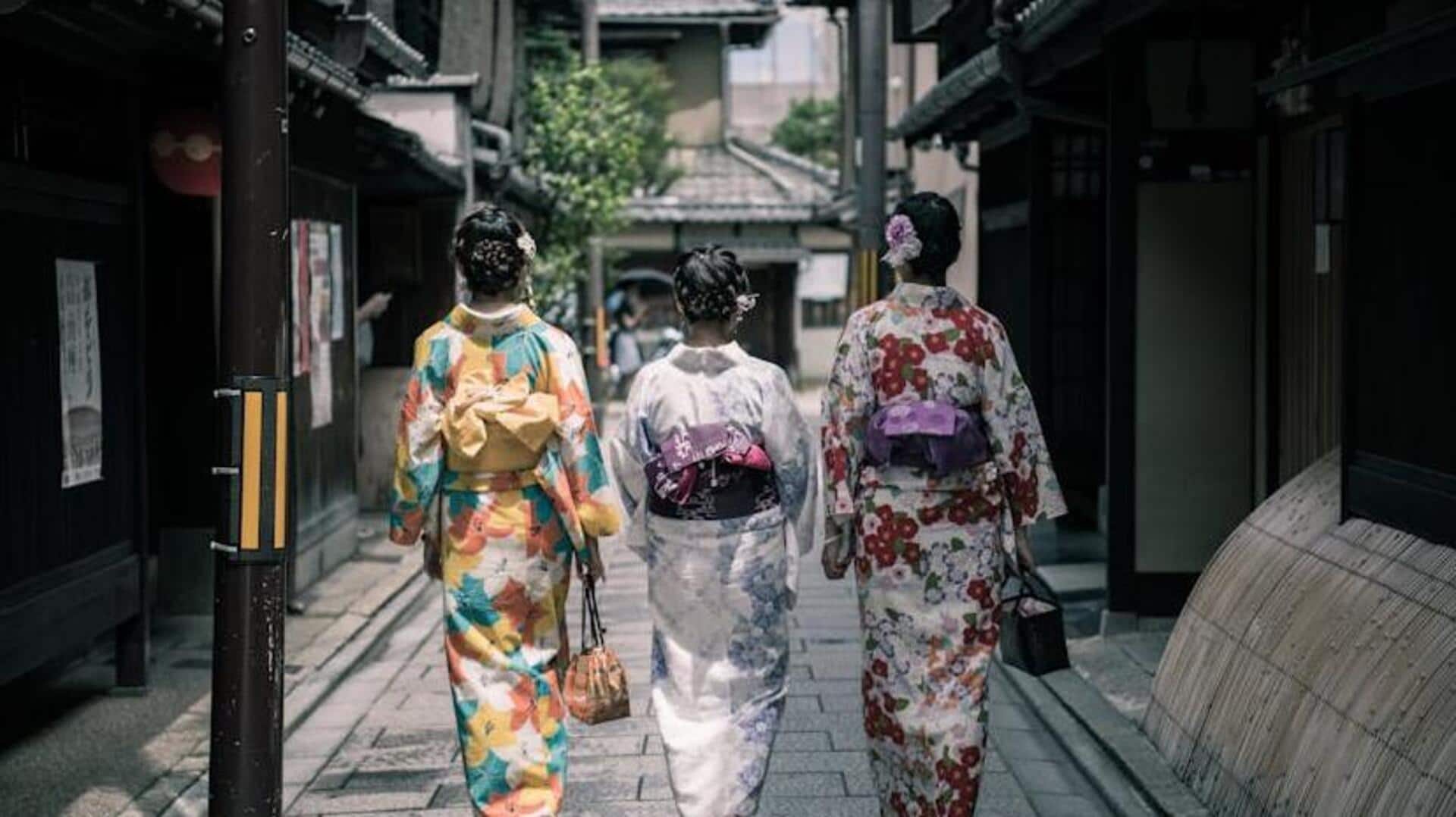
5 hidden meanings behind Japanese kimono patterns
What's the story
Japanese kimono patterns are an intriguing aspect of traditional Japanese culture. They represent the country's rich history and artistic heritage. These patterns aren't just decorative but also carry deep meanings and symbolism. From seasonal motifs to auspicious symbols, each pattern tells a story or conveys a message. Understanding these patterns offers insight into Japanese aesthetics and cultural values. They make an interesting subject to explore.
Seasonal symbols
Seasonal motifs in kimono patterns
Kimono patterns often use motifs representing the four seasons. While cherry blossoms represent spring, maple leaves represent autumn. Not only do these seasonal motifs look good but they also symbolize the wearer's connection to nature and time of year. The pattern chosen can speak to the season in which the kimono is worn, demonstrating an appreciation of natural beauty.
Good fortune icons
Auspicious symbols in design
Many kimono patterns include symbols that are believed to bring good luck or keep evil spirits at bay. Cranes represent longevity and happiness, while turtles symbolize endurance and stability. These auspicious symbols are selected carefully to convey positive wishes for the wearer, making them popular choices for special occasions like weddings or celebrations.
Geometric designs
Geometric patterns with meaning
Geometric patterns, be it stripes, checks, or hexagons, also have particular meanings in kimono design. For example, hexagonal shapes may represent tortoise shells that symbolize longevity. Stripes can symbolize simplicity or elegance, depending on how they are arranged and the color scheme. These geometric designs further add depth to kimonos by marrying beauty with cultural significance.
Natural inspirations
Nature-inspired elements in kimonos
Nature plays a major role in the inspiration behind kimono patterns, other than seasonal motifs. Waves represent resilience against adversity, bamboo represents strength through its inherent flexibility, and the evergreen pine trees symbolize steadfastness in all seasons. Every element is carefully chosen for its symbolism in Japanese culture, further making the traditional garment a lot more beautiful than it already is.
Color meanings
Color symbolism in kimono patterns
Colors used within kimono patterns also carry symbolic meanings that add to their overall impact on viewers' perceptions about wearers' intentions behind wearing them at particular events or occasions. For example, red signifies passion or love, whereas white denotes purity or innocence, among others. This adds another layer of complexity when interpreting these beautiful garments.